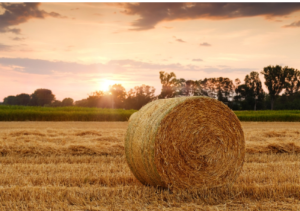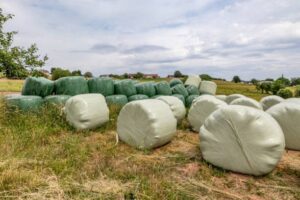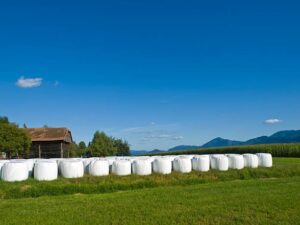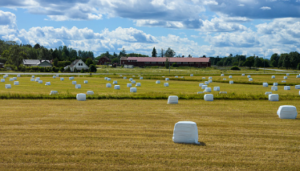In the vast, sun-drenched plains of Australia, where agriculture reigns supreme, the sight of hay bales dotting the landscape is a common one. Behind every neatly bundled bale lies a critical component of farm management: baling twine. However, the significance of a baling twine bulk supplier in Australia often goes unnoticed. In this article, we delve into the indispensable role these suppliers play in the agricultural ecosystem, serving as the backbone of efficient bale management across the continent.
The Importance of Bale Management:
 Before delving into the role of baling twine bulk suppliers, it’s crucial to understand the importance of bale management in Australian agriculture. Bale management encompasses the process of harvesting, bundling, storing, and transporting hay, straw, or other agricultural products.
Before delving into the role of baling twine bulk suppliers, it’s crucial to understand the importance of bale management in Australian agriculture. Bale management encompasses the process of harvesting, bundling, storing, and transporting hay, straw, or other agricultural products.
Baling Twine: The Unsung Hero:
At the heart of bale management lies baling twine – a seemingly mundane material that plays a pivotal role in securing bales and maintaining their integrity. Baling twine, typically made from synthetic materials like polypropylene or polyethylene, possesses the strength and durability necessary to withstand the rigours of agricultural handling and transportation. Without reliable twine, bales would be prone to unravelling, leading to losses in both quality and quantity.
The Role of Baling Twine Bulk Suppliers:
Baling twine bulk suppliers serve as lifelines for Australian farmers, providing them with the essential materials needed for bale management. These suppliers offer twine in large quantities, catering to the diverse needs of farmers across the country.
Quality and Consistency:
One of the primary advantages of sourcing baling twine from bulk suppliers is the assurance of quality and consistency. Reliable suppliers ensure that farmers receive twine that meets stringent performance standards, including strength, durability, and resistance to environmental factors. Consistent quality is crucial for safeguarding the integrity of bales throughout the storage and transportation process, minimising losses and preserving the value of the harvest.
Versatility and Customisation:
A baling twine bulk supplier understands that one size does not fit all when it comes to bale management. That’s why they offer a range of twine options tailored to suit different types of baling equipment and techniques. Whether it’s round bales, square bales, or large rectangular bales, suppliers can provide twine solutions optimised for each application. This versatility allows farmers to customise their baling processes, maximising efficiency and minimising waste.
Logistical Support:
In addition to supplying twine, bulk suppliers play a crucial role in facilitating the logistics of bale management. They offer timely delivery services and logistical support, ensuring that farmers have access to twine when and where they need it most. This support is particularly valuable during peak harvesting seasons when demand for baling materials is at its highest. By partnering with reliable suppliers, farmers can streamline their operations and minimise disruptions.
Environmental Responsibility:
As stewards of the land, Australian farmers are increasingly embracing sustainable practices in agriculture. Baling twine bulk suppliers contribute to this effort by offering environmentally friendly options, such as biodegradable twine made from natural fibres or recyclable materials. By opting for sustainable twine solutions, farmers can reduce their environmental footprint without compromising on performance or reliability. It aligns with Australia’s commitment to sustainable agriculture and the conservation of natural resources.
Partnerships and Collaboration:
The relationship between farmers and baling twine bulk suppliers is built on trust, collaboration, and mutual respect. Suppliers work closely with farmers to understand their unique requirements and challenges, providing personalised solutions that address specific needs. This partnership approach fosters long-term relationships based on shared goals and objectives, driving continuous improvement and innovation in bale management practices.
In conclusion, a baling twine bulk supplier is an indispensable partner in Australian agriculture, serving as the backbone of efficient bale management. Their role in providing essential materials, logistical support, and expertise is instrumental in maximising crop yields, minimising wastage, and ensuring the timely delivery of feed to livestock. By partnering with reliable suppliers who prioritise quality, consistency, and sustainability, farmers can navigate the complexities of bale management with confidence and resilience, securing a prosperous future for themselves and future generations.

 Protecting hay or straw crops from insects and rodents that would otherwise consume it helps preserve its nutrient content, prolonging animal feedings without having to dispose of it as trash – thus giving farmers an opportunity to capitalise from these crops without tossing them out as waste.
Protecting hay or straw crops from insects and rodents that would otherwise consume it helps preserve its nutrient content, prolonging animal feedings without having to dispose of it as trash – thus giving farmers an opportunity to capitalise from these crops without tossing them out as waste. Covers may be created using plastic tarps weighted down by tires, which create vast amounts of waste every year and frequently end up in landfills or recycling centres.
Covers may be created using plastic tarps weighted down by tires, which create vast amounts of waste every year and frequently end up in landfills or recycling centres. When selecting a bale wrapping product, producers should consider its strength and durability. A strong, resilient net wrap can handle intense pressure from the baler and dense crops or explosive loads. Furthermore, it provides an effective oxygen barrier, making the bale less likely to spoil during storage.
When selecting a bale wrapping product, producers should consider its strength and durability. A strong, resilient net wrap can handle intense pressure from the baler and dense crops or explosive loads. Furthermore, it provides an effective oxygen barrier, making the bale less likely to spoil during storage.